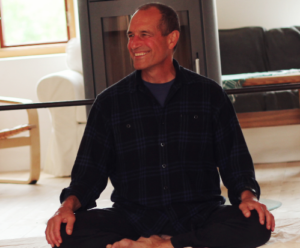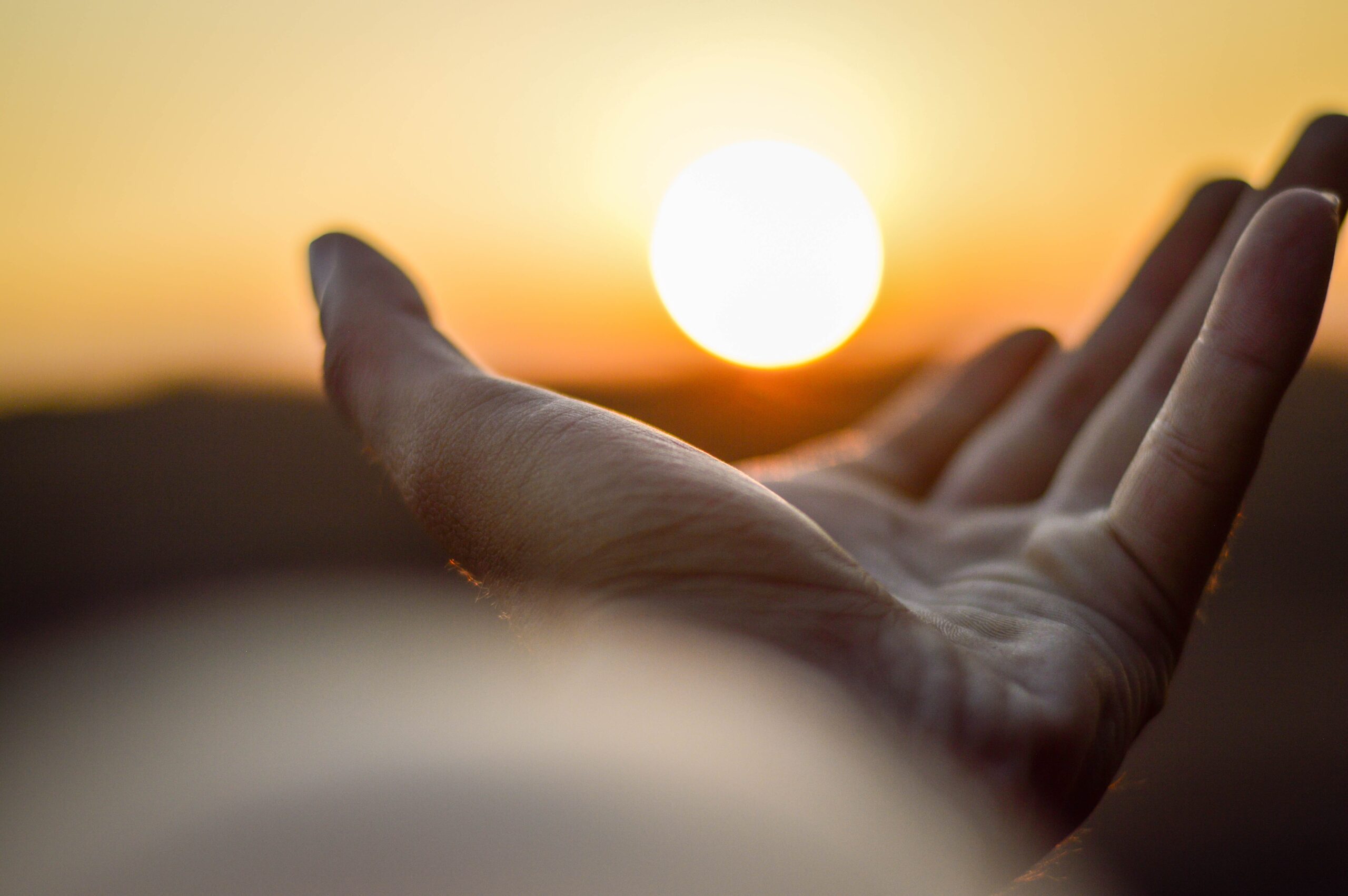Two of the greatest gifts in my life have been my meditation practice of more than 50 years and the transformative learning with Moshe Feldenkrais that began in 1975. It would be difficult to exaggerate my gratitude for these gifts. They have worked together, always congruently, yet in similar and dissimilar ways. In this writing, I will explore how this marriage of different, deeply related practices, have supported my life journey.
The defining element of each is the centrality of awareness. Both recognize this capacity as the key to human evolution, fulfillment and freedom. In his book, “Awareness Through Movement”, Feldenkrais expresses his belief that awareness is a relatively new function and that we are in an “historically brief transition period that heralds the emergence of the truly human man” (p.46).
Awareness is difficult to define. Feldenkrais called it: “knowing and knowing that you know”. The “meta” aspect is essential. More than simply attending to something there is another level where one is cognizant of the knowing. One not only reflects on something, but one also notices the process of reflecting – reflecting on reflecting or awareness of awareness.
Embodied meditation, the name for the way I practice, begins with attending to breathing and the basic body sense. As awareness develops there is an unfolding from the experience “I am attending” (subject/object) to a deep intimacy in which the noticing and the noticer merge in full consciousness (oneness). Imagine you are looking at the sky, genuinely seeing it, and then another level of experience occurs in which your ability to see (vision), what you’re seeing (the sky), and the one seeing (you) merge. This is sometimes called self-illumination. In spontaneous, unanticipated moments, this oneness becomes effortless. It is an experience of “knowing and knowing that you know”.
Now that’s a lot of complexity to digest.
Let’s go back to the beginning…
Meditation
I started meditation as an eighteen-year-old, university student, while mending a broken heart. Without any prior spiritual or religious leanings, after reading an article describing Zen practice, I was immediately hooked. I suppose the broken heart opened something in me. A sitting practice began that day and has continued ever since.
My first discovery…
Almost immediately, I had the disturbing insight that there was a voice in my head constantly talking to “me”, interpreting the world. Strange as it seems now, I had never before noticed the incessant judgments, opinions, insecurities, etc. that plagued my inner world. In short, I was often lost in head-noise, “monkey mind”, and shocked to realize this fact. This was confusing and painful, in some ways, just being lost is easier than being lost and knowing it! From this time onward, I became determined to have more moments of direct experience, rather than living in this secondhand inner dialogue.
Feldenkrais
I joined Feldenkrais’ first professional training in San Francisco, with very little knowledge about him or his method. Looking back, it was an intuitive leap, initiated by this comment from a well-respected friend – “Feldenkrais’ method is the leading edge for connecting mind-body and a deep understanding of the evolution of consciousness”. He knew these were my passions.
At this time, I was teaching meditation and yoga. My first month of Feldenkrais “Awareness Through Movement” lessons was underwhelming. As a young, athletic, flexible person, the movements were not challenging at all. It took me some time to uncover the deeper levels at work. I began to realize that he was training us in being aware, not in movement or, rather, movement was the means to grow awareness. The benefits to the body were “icing on the cake”, payoff for growing one’s embodied awareness.
All these lessons have specific, precise movements followed by pauses to allow the learning to coalesce. As I became absorbed in deeper attention to the small movements, the quality of the movements became more and more refined. Surprisingly, another level of experience began to emerge during the pauses – a profoundly quiet state of wholeness and inner freedom effortlessly appeared. Without directing or controlling my attention, the light of inner Being was “on”- I was aware. This was the effortless awareness that I had occasionally touched in my meditation practice. I knew that there was something about integration through movement that allowed this potent state to occur.
Learning Through Movement, Learning Through Stillness
In my experience, some aspects of awareness are most readily learned through movement and some through stillness. Learning styles for some likely favors one over the other. For most of us, the two serve differing, vital roles, even if one modality remains more attractive. Stillness and Movement are like two legs for propelling us forward in our lives. More accurately, two legs propelling us into the present moment.
Learning Through Movement
Feldenkrais Method can be so effective at working with physical difficulties, that it is unfortunately often reduced to a kind of movement therapy. Of course, bringing relief to hurting bodies and learning to move in more harmonious ways is wonderful. These are skills rarely learned through sitting meditation. Still, there is another level of learning that is both deeper and more subtle.
As one does these movements, sleepy motor patterns and positive movement potentials are awakened. We have the potential, after engaging in lessons, to sense our bodies in motion more readily in daily life. This does not occur for everybody, as I will describe a bit later.
Just like a music conductor can hear more distinctions in sound without efforting or a painter can see colors with greater than average precision, mastery of the “body sense” enhances one’s sensory-motor capabilities. Not only does one learn to move with more ease and grace, but one’s presence as an embodied being is enriched. An integrated sense of wholeness, of well-being, can grow as embodied awareness develops. Paradoxically, as I described above, attending to bodily movement can lead to moments of inner stillness akin to meditation.
While all this is possible, I have noticed a disconcerting possibility. When people are focused mostly on eliminating pain and improving function (two excellent motivations), they often do not apply the learning to the rest of their lives. They may not become more aware in their daily interactions or more settled in their bodies. The learning stays segregated to their area of improvement.
Many people do Feldenkrais lessons (and other wonderful awareness-based, somatic traditions like yoga and Pilates), as physical exercises and miss the opportunity to grow awareness as a generalized function outside of class. As I describe in another writing, Feldenkrais had anticipated that movement awareness would spontaneously generalize “across the brain”, creating people who were more aware throughout their lives. While this can happen spontaneously, in my experience, it usually requires some further intentionality and attention. When I asked Moshe about this he said, “it is the greatest disappointment of my life”. This is not a criticism of this incredible method, rather it suggests that integrating movement practice with other methods of reflection and intention, meditation being one example, might yield superior results.
Learning Through Stillness
Embodied Meditation is based in the Zen practice of “just sitting” (shikantaza in Japanese). As one drops under the movements of mind into a stable sense of the physical body, there grows the fundamental, pre-verbal experience, “I am here”. As simple and obvious as this seems, it is quite profound. It is the entryway to the “I am” experience.
To appreciate what I mean by “I am”, I need to say something about the “I”. This is a huge subject, I will hint at it here. Deeper than the various qualities we use to identify ourselves – body, mind, gender, nationality, religion, race, opinions, preferences, and beliefs, is a quality of Being that is larger than all of these. This is not as esoteric as it sounds. We all have moments where we are free from the past and future and free from ordinary thinking. At these moments, we enter a larger space, in which perception is more whole, free and fulfilling. This larger space of awareness – free from historic self-identity – is a great gift of inner development.
When we cease all but the subtle movements of breath and mind, the inner sense of embodied presence or Beingness, emerges. Although it is possible to have this experience in movement, it is much more readily sensed when most movement stops.
Ironically, in stillness, the more subtle, ceaseless, inner movements can be readily noticed. Movements of thought can be witnessed along with the movements of feelings, emotions, intuitions and other inner phenomena. The neutral background of stillness, like a blank canvas, allows significant, often overlooked happenings, to be revealed.
Benefits/Risks of Movement and Stillness
– Feldenkrais would say: “movement is life, without movement life is unthinkable”. We live most moments in movement. In some ways, it is unnatural to maintain the stillness of meditation. Moving with greater awareness, fluidity and ease is a gift, often a joy. Some people find it much easier to “pay” attention when moving then when still. For some, sitting still can feel so confining they feel trapped. Overcoming this antipathy is tremendously liberating. Often, anxiety and unsettledness in ourselves is expressed through a compulsion to move. Learning to live through these moments is transformative.
– In our modern world, with so much demand to be productive and all the constant stimulation, learning to “do nothing”, yet be present, is both counterintuitive and revolutionary. The shift from identifying self-worth with accomplishments and getting through our “to do list” (which I also enjoy), to valuing “just being alive” changes our appreciation for life.
– Even helpful awareness-based, somatic practices like Feldenkrais, Yoga, Pilates, etc. can, unintentionally, invite greater identification with the body. We are much more than physical beings; our bodies are important carriers of our experiencing but to identify the “I” as the physical body is a reductionistic tragedy. Our materialistic culture encourages this kind of identification. One of the benefits of a meditation practice is to invite a deeper sense of self. When a thoughtful somatic teacher emboldens this deepening inquiry, it is, of course, available in movement practices as well.
– Feldenkrais was a man of action, he would say that “thinking that doesn’t lead to a new means of action is useless”. Working with movement tends to mobilize people more than meditation. One of the dangers of a meditation practice is a kind of stagnation. One can become a “navel gazer”, a person who has difficulty mobilizing. A movement practice can be a very helpful counter to this tendency.
Feldenkrais Method and Embodied Meditation are very helpful gifts for our unfolding humanity. Each is complete unto itself yet when combined, offer more reliable and deeper learning. As I said at the beginning, these are two of the most important contributions to my life. My gratitude for both is endless.
 About Russel
About Russel
Russell Delman is deeply indebted to his more than 50 years of Zen meditation, movement awareness and somatic psychology for his learning.
Trained by Moshe Feldenkrais from 1975-1978, Russell maintained a close personal relationship with Dr. Feldenkrais until his death. He has helped educate more than 2500 Feldenkrais® practitioners worldwide. He is grateful for the profound influence of Eugene Gendlin, creator of “Focusing”, for his mentoring and friendship.
Russell is the founder of The Embodied Life™ School, a deep integration of Meditation, Feldenkrais Movement and Embodied Inquiry. Russell credits his 49 years of marriage to Linda and the raising of their daughter, Liliana, as the greatest teachers in his life.
His website is https://theembodiedlife.org

